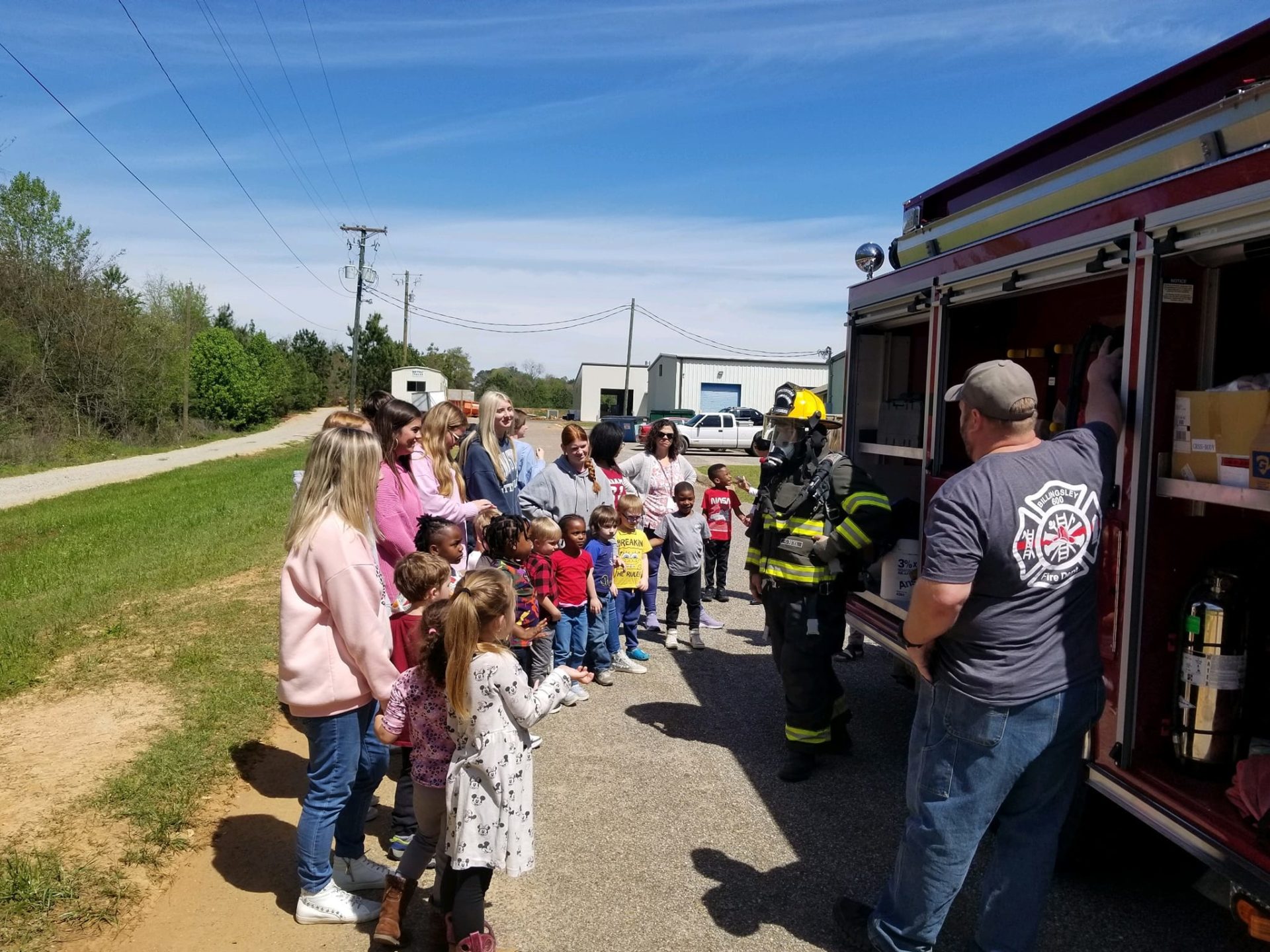Just as the need for effective firefighting continues to grow, so does the role of volunteer firefighters in promoting sustainable practices within the field. You may not realize that these dedicated individuals not only respond to emergencies but also implement eco-friendly strategies that minimize environmental impact. In this post, you will discover how volunteer firefighters play a pivotal role in community education, resource management, and innovative firefighting techniques that foster sustainability. Understanding their contributions can help you appreciate the importance of volunteer efforts in creating a greener future for fire safety.
The Role of Volunteer Firefighters in Community Engagement
The engagement of volunteer firefighters within the community is vital for fostering a sense of unity and readiness. By participating in local events and safety programs, they not only enhance community awareness about fire risks but also create opportunities for residents to connect with each other. This involvement strengthens the fabric of the community and builds a culture of safety that extends beyond firefighting alone.
Building Trust and Relationships
For volunteer firefighters, establishing trust and forging relationships with community members is paramount. Through regular interaction, they demystify the firefighting process and show that they are your neighbors, dedicated to protecting your home and environment. These connections enable you to feel more secure, knowing that trained individuals are invested in the well-being of your community.
Educating the Public on Fire Safety
Building awareness about fire safety among citizens is a primary focus of volunteer firefighters. They strive to inform you about prevention strategies, such as safe cooking practices and the importance of smoke detectors. This education helps you and your family implement measures that reduce fire risks in your home.
For instance, volunteer firefighters often host workshops and demonstrations that cover important topics like escape plans and fire extinguisher usage. By engaging with the public through hands-on learning opportunities, they empower you to take proactive steps in fire preparedness. The result is a more informed community that is better equipped to prevent fires and respond effectively if an emergency arises.
Cost-Effective Fire Services
Clearly, volunteer firefighters play a significant role in creating cost-effective fire services, allowing communities to allocate financial resources more efficiently. By supplementing or even replacing paid staff, these volunteers enable fire departments to operate with lower personnel costs while still providing crucial services. This dynamic not only reduces the financial burden on taxpayers but also reinforces the commitment of community members to support fire safety initiatives.
Reducing Government Expenditures
Before implementing any fire protection strategies, consider how volunteer firefighters can effectively reduce government expenditures. By minimizing the need for full-time paid personnel, local governments can redirect funds to other vital community services, leading to an overall increase in quality of life. This approach not only saves money but also fosters stronger community ties as residents contribute to their safety.
Resource Allocation and Efficiency
Below, you’ll find that resource allocation and efficiency are paramount in optimizing fire services. Volunteer firefighters enable a more strategic deployment of resources, ensuring that personnel and equipment are available where they are needed most. This balanced approach allows departments to prioritize emergency responses and enhance community outreach programs, further improving overall public safety.
Allocation of resources in fire services hinges on the collaboration between volunteer firefighters and municipal departments. By ensuring that volunteers are well-trained and integrated into the firefighting framework, you can maximize the effectiveness of available personnel. Their local knowledge allows for a quicker, more targeted response during emergencies, ensuring that both time and resources are utilized wisely. Moreover, volunteers can assist in public education and prevention initiatives, which further optimizes the overall efficiency of fire services in your community.
Skills Development and Training
Some volunteer firefighters undergo comprehensive training programs, which equip you with the necessary skills needed for effective firefighting. This training encompasses various aspects, including emergency response techniques, equipment handling, and risk assessment. By continually honing these skills, you ensure that you can respond effectively in emergencies while adhering to sustainable practices that minimize resource wastage and environmental impact.
Continuous Learning and Improvement
Between formal certifications and on-the-job experiences, you have numerous opportunities for continuous learning. Engaging in workshops, drills, and peer mentorship allows you to refine your techniques and adapt to evolving best practices in firefighting. This commitment to improvement not only enhances your capabilities but also contributes to a culture of safety and efficiency within your firefighting community.
Enhancing Emergency Response Capabilities
Across various scenarios, your role as a volunteer firefighter significantly enhances emergency response capabilities in your community. Effective training and teamwork ensure that all team members are prepared to tackle diverse emergencies swiftly and efficiently. By employing established protocols and utilizing efficient communication systems, you increase the overall response quality, leading to better outcomes for the people you serve.
And by staying updated with the latest firefighting techniques and technologies, you bolster your emergency response capabilities even further. This enables you to handle complex situations, such as wildfires or urban fires, with greater efficacy. Additionally, integrating sustainability into your strategies means that you can manage resources more effectively, lessening the environmental footprint of your operations while ensuring community safety. Your commitment not only improves your personal skill set, but it also ensures that your team stands ready to protect lives and property sustainably.
Promoting Environmental Awareness
Many volunteer firefighters actively educate their communities about the importance of environmental protection in relation to firefighting practices. By hosting workshops and distributing informational materials, you can foster a better understanding of how fire-related activities impact the ecosystem. This awareness helps inspire positive changes in behavior, encouraging your community to adopt more sustainable practices and consider the environmental aspects of fire management.
Sustainable Fire Prevention Practices
Awareness of sustainable fire prevention practices is key to minimizing wildfire risks and protecting natural resources. You can promote methods such as controlled burns, creating defensible spaces, and responsible landscaping to help mitigate fire hazards while supporting local ecology. By advocating these practices, you contribute to a more balanced approach to fire safety and environmental stewardship.
Collaboration with Environmental Organizations
Any volunteer firefighter can benefit from collaborating with environmental organizations. These partnerships help share knowledge about sustainable practices and provide access to resources that enhance your firefighting efforts while preserving the environment.
In addition, working with environmental organizations can lead to joint initiatives that focus on habitat restoration and fire prevention education. These collaborations enable you to address local environmental concerns while fostering a sense of community engagement. By pooling resources and expertise, you can implement effective strategies that not only protect your area from wildfires but also promote overall ecological well-being.
Inter-agency Cooperation
For volunteer firefighters, inter-agency cooperation is key to enhancing overall firefighting effectiveness and sustainability. By collaborating with various organizations—including career fire departments, emergency medical services, and other public safety agencies—you foster a community-centered approach to emergencies. This synergy not only improves resource allocation but also promotes knowledge sharing, which can lead to more innovative and sustainable practices in firefighting.
Working with Career Fire Departments
Before engaging with career fire departments, it’s vital to establish clear communication channels and protocols. This relationship can benefit you greatly, as the expertise of career firefighters can complement your knowledge and skills. By working together on various calls and training drills, both volunteer and career personnel can learn from each other, creating a more efficient firefighting team.
Multi-Agency Training Exercises
An important aspect of inter-agency cooperation is participating in multi-agency training exercises. These events provide vital opportunities for all involved departments to practice joint operations and improve coordination during actual emergencies.
Departments across various public safety sectors benefit immensely from multi-agency training exercises. Not only do these exercises improve teamwork and communication, but they also allow for the development of shared strategies for combating fires and managing crises. By practicing scenarios together, you can familiarize yourself with the specific protocols of other agencies and ensure that everyone is well-prepared for real-life collaborations. This shared learning can lead to a more cohesive response during emergencies, ultimately enhancing the sustainability of firefighting practices in your community.
Challenges Faced by Volunteer Firefighters
Despite their dedication, volunteer firefighters often encounter numerous challenges that affect their ability to serve their communities effectively. These obstacles range from the need for ongoing training and education to balancing personal commitments with the demands of firefighting. Additionally, they must navigate issues like funding limitations and resource availability, which can hinder their operational capabilities and overall effectiveness.
Time Commitment and Burnout
At the heart of the volunteer experience lies the challenge of time commitment, as you must balance your personal life, work, and firefighting duties. The irregular hours and unpredictable nature of emergencies can lead to a feeling of burnout, making it difficult to maintain enthusiasm for the role. Prioritizing self-care and time management becomes vital to ensuring you can continue serving effectively.
Funding and Resource Limitations
By securing adequate funding, volunteer fire departments can address the challenges they face in providing crucial services. Limited financial resources can impact the availability of necessary equipment, training, and maintenance, creating gaps in your community’s fire safety capabilities.
Challenges in funding and resource limitations significantly impede the operational effectiveness of volunteer fire departments. You may find that this lack of financial support results in insufficient training opportunities and outdated equipment, which can compromise your ability to respond efficiently to emergencies. When resources are stretched thin, additional responsibilities may fall on you and your fellow volunteers, leading to increased stress and diminished morale. Addressing these funding challenges requires collective advocacy and community engagement to ensure your department has the necessary support to protect your community effectively.
Final Words
From above, it’s evident that volunteer firefighters play a significant role in promoting sustainable firefighting practices. By engaging with their communities, you can foster greater awareness of fire safety and prevention, ensuring your local ecosystem is protected. Additionally, your commitment to ongoing training and education enhances firefighting techniques that prioritize resource efficiency. Ultimately, by collaborating with professional fire services and implementing sustainable practices, you contribute not just to immediate fire control, but to the well-being of your environment for generations to come.


